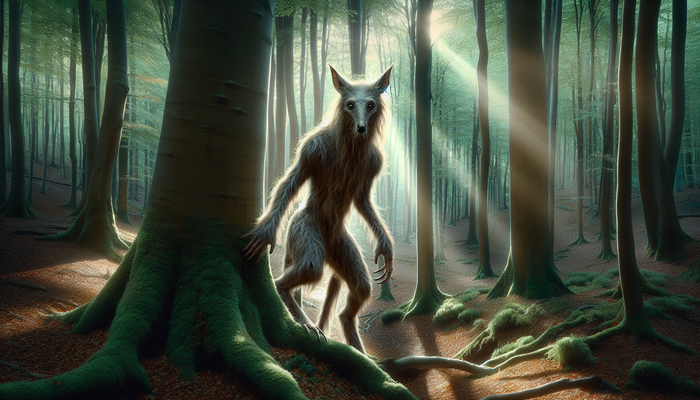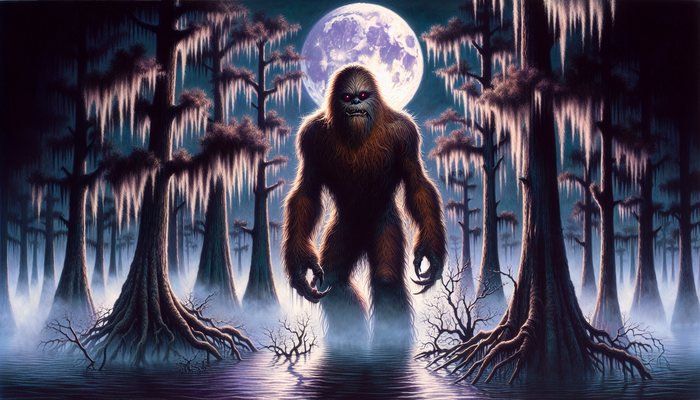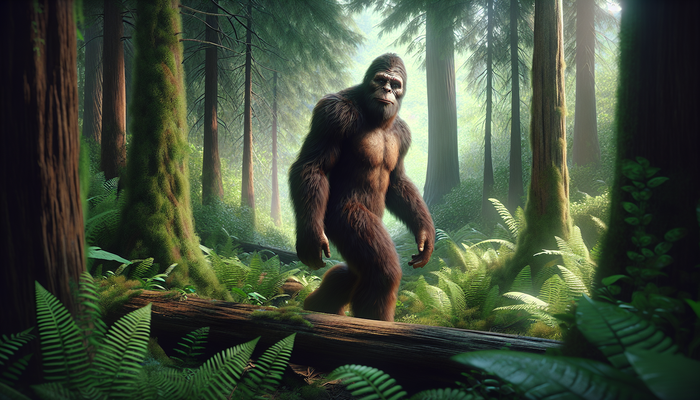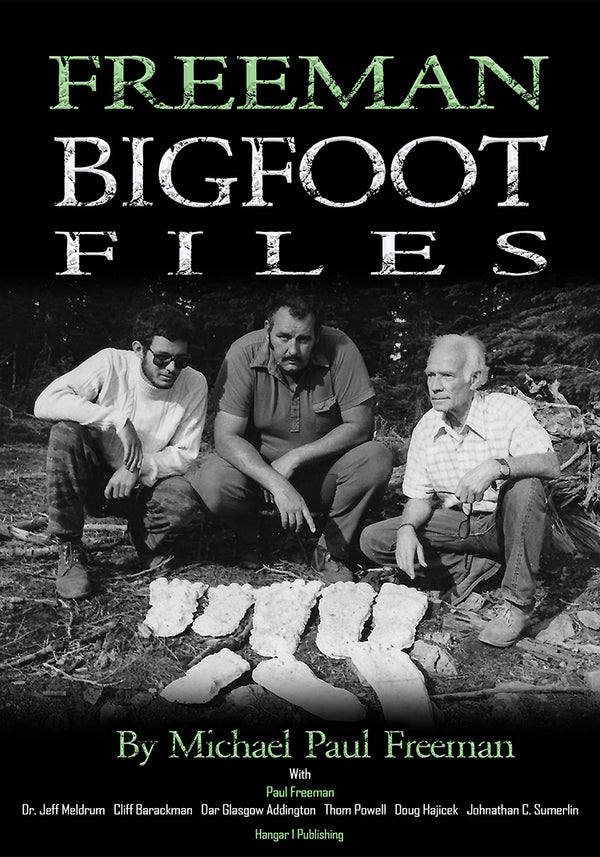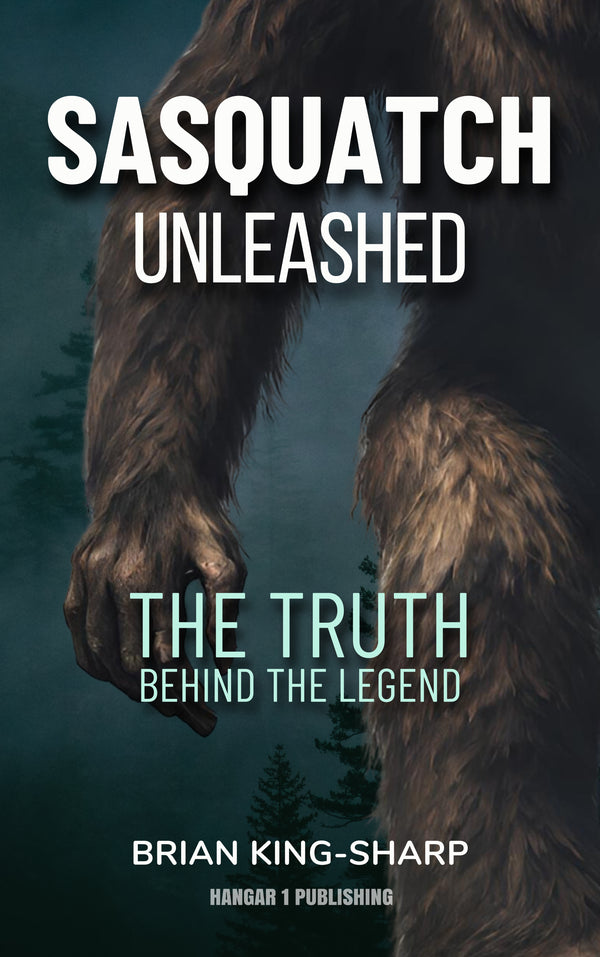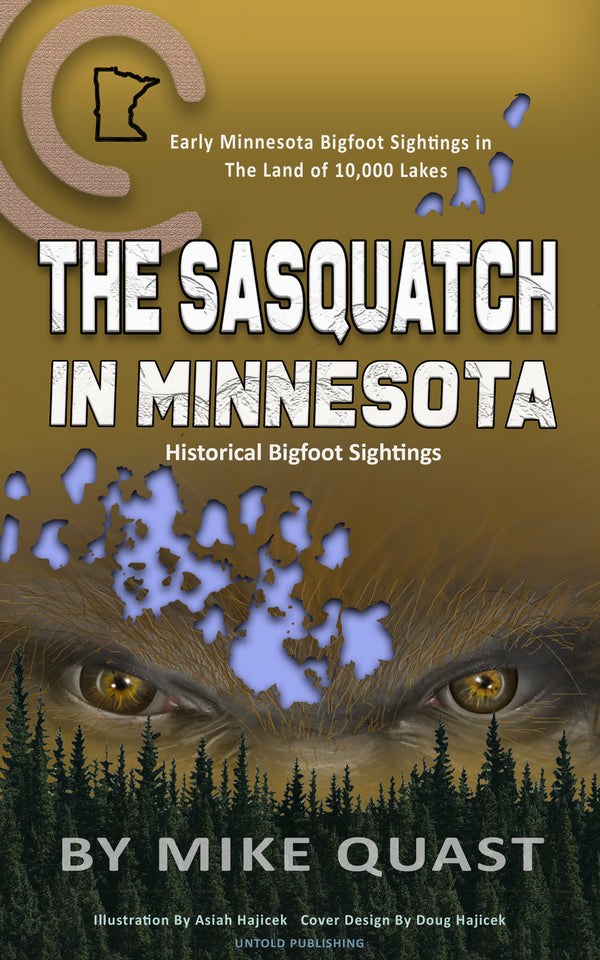Bigfoot Hoaxes and Their Impact on Research: Unmasking the Myths
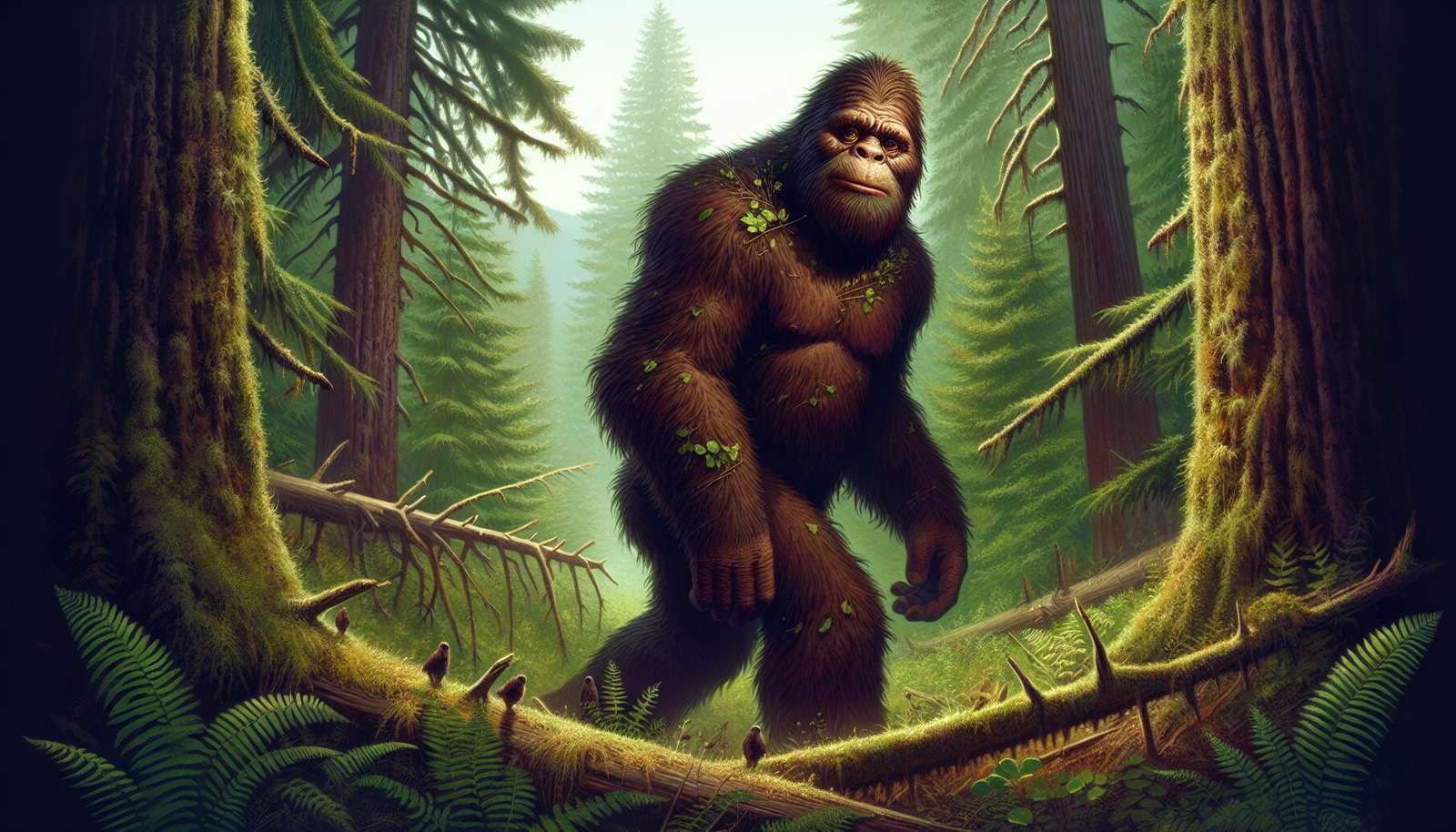
By Dr. Elizabeth Harper, Cryptozoologist
The legend of Bigfoot has captivated the American imagination for decades. This elusive, ape-like creature is said to roam the forests of North America, leaving behind only fleeting glimpses, mysterious footprints, and endless speculation. But beneath the surface of this enduring myth lies a complex web of hoaxes, scientific skepticism, and cultural significance that has profoundly shaped both public perception and academic inquiry.
The Birth of the Bigfoot Phenomenon
The modern Bigfoot phenomenon burst onto the scene in 1958, when a bulldozer operator named Jerry Crew made a cast of enormous footprints he'd discovered at a construction site in Bluff Creek, California. The local newspaper, the Humboldt Times, ran the story with the headline "Giant footprints puzzle residents," coining the term "Bigfoot" in the process. This single event ignited a firestorm of interest that would burn for years to come.
But there was more to the story than met the eye. Years later, the family of Ray Wallace, a local logger, revealed that he had created those very footprints using carved wooden feet. This admission cast a long shadow over the entire field of Bigfoot research, highlighting the ease with which a simple prank could spawn a nationwide obsession.
Notable Bigfoot Hoaxes
The Wallace hoax was just the beginning. Over the years, a parade of frauds, fakes, and fabrications has marched through the annals of Bigfoot lore, each leaving its mark on the public consciousness and the scientific community's approach to the subject.
The Patterson-Gimlin Film
Take, for instance, the infamous Patterson-Gimlin film of 1967. This shaky, 59-second clip purports to show a female Bigfoot striding along a creek bed in northern California. For many, it remains the most compelling piece of evidence for Bigfoot's existence. But skeptics have long argued that the creature in the film is nothing more than a man in a suit, pointing to inconsistencies in its gait and proportions.
The debate over the Patterson-Gimlin film illustrates a key challenge in Bigfoot research: the difficulty of definitively proving or disproving claims in the absence of clear physical evidence. This ambiguity has allowed the Bigfoot myth to persist, even as more outlandish hoaxes have been thoroughly debunked.
The Georgia Bigfoot Hoax
Consider the 2008 Georgia Bigfoot hoax, in which two men claimed to have found a Bigfoot corpse. They held a press conference, released grainy photos, and promised DNA evidence. The media frenzy was intense but short-lived. When the "body" was finally revealed, it turned out to be nothing more than a rubber gorilla costume stuffed with animal organs.
This incident dealt a serious blow to the credibility of Bigfoot researchers and enthusiasts. It reinforced the public perception of Bigfoot believers as gullible or delusional, making it even harder for serious scientists to approach the subject without risking their reputations.
The Impact of Hoaxes on Scientific Research
The impact of these hoaxes extends far beyond public ridicule. They've created a climate of extreme skepticism within the scientific community, making it nearly impossible to secure funding or institutional support for any research related to Bigfoot. This chilling effect has pushed the field to the fringes of academia, where it's often lumped in with other pseudosciences.
Dr. Jeff Meldrum, a professor of anatomy and anthropology at Idaho State University and one of the few academics to seriously study Bigfoot, has experienced this firsthand. "The hoaxes have poisoned the well," he says. "They've made it incredibly difficult to conduct legitimate research without being dismissed out of hand."
Motivations Behind Bigfoot Hoaxes
But why do these hoaxes persist? What drives people to fabricate evidence of a creature that, by all scientific accounts, doesn't exist?
The motivations are as varied as the hoaxes themselves:
- Simple mischief-making (e.g., Ray Wallace)
- Promise of fame and fortune (e.g., Georgia Bigfoot hoaxers)
- Genuine belief in Bigfoot, justifying manufactured "evidence"
Whatever the reasons, the proliferation of hoaxes has had a profound impact on how we approach the entire concept of Bigfoot. It's created a sort of epistemological arms race, with believers and skeptics constantly trying to one-up each other with new claims and debunkings.
The Technological Arms Race
This dynamic has been further complicated by the rise of digital technology. On one hand, tools like Photoshop and CGI have made it easier than ever to create convincing fakes. A blurry video of a dark figure moving through the woods can be whipped up in minutes and shared with millions online.
On the other hand, these same technological advances have also made it easier to detect hoaxes. High-resolution cameras, drone footage, and DNA analysis have raised the bar for what constitutes compelling evidence. A fuzzy photograph that might have caused a stir in the 1970s would be dismissed out of hand today.
This technological arms race has led to a sort of stalemate in the world of Bigfoot research. The quality of evidence hasn't improved significantly in decades, despite the fact that nearly everyone now carries a high-quality camera in their pocket at all times. This lack of progress has led many to conclude that Bigfoot simply doesn't exist.
The Enduring Appeal of Bigfoot
But the absence of evidence is not necessarily evidence of absence, as the saying goes. And herein lies the enduring appeal of Bigfoot: the tantalizing possibility, however remote, that an undiscovered primate could be lurking in the forests of North America.
This possibility, slim as it may be, continues to drive both amateur enthusiasts and a small cadre of professional scientists to search for conclusive proof of Bigfoot's existence. Their methods have become increasingly sophisticated, employing everything from thermal imaging cameras to environmental DNA analysis.
Scientific Approaches to Bigfoot Research
Dr. Meldrum, for instance, has focused much of his research on footprint analysis, arguing that some casts show evidence of midtarsal flexibility that would be difficult to fake and is inconsistent with known primate foot structures. While his work is controversial, it represents a more rigorous approach to Bigfoot research than the sensationalized hunts often depicted in popular media.
Other researchers have turned to genetics in search of answers. In 2012, a team led by Dr. Melba Ketchum claimed to have sequenced Bigfoot DNA, concluding that the creature was a hybrid between humans and an unknown primate species. However, their results were widely criticized by the scientific community, with many pointing out flaws in their methodology and the lack of peer review.
The Cultural Significance of Bigfoot
The persistence of Bigfoot in the public imagination, despite the lack of concrete evidence and the prevalence of hoaxes, speaks to something deeper in the human psyche. Bigfoot represents a connection to the wild, untamed spaces that still exist in our increasingly urbanized world. It's a reminder that there may still be mysteries out there, waiting to be discovered.
This symbolic power of Bigfoot has led some researchers to approach the phenomenon from a more anthropological perspective. They argue that, whether or not Bigfoot exists as a flesh-and-blood creature, its cultural impact is very real and worthy of study.
Dr. Joshua Blu Buhs, author of "Bigfoot: The Life and Times of a Legend," takes this approach. He sees Bigfoot as a reflection of American anxieties and desires, particularly around issues of wilderness and masculinity. "Bigfoot allows people to imagine a world that's not completely tamed," he says. "It's a way of pushing back against the idea that we've explored and explained everything."
Economic Impact of Bigfoot Tourism
This cultural significance of Bigfoot extends beyond academia. The creature has become a staple of popular culture, appearing in everything from beef jerky commercials to serious documentaries. It's a multimillion-dollar industry, with Bigfoot-themed tourism drawing visitors to small towns across the Pacific Northwest.
The economic impact of Bigfoot tourism highlights another aspect of the hoax phenomenon: the potential for financial gain. When a town becomes known as a Bigfoot hotspot, it can see a significant boost in visitors and revenue. This creates an incentive for locals to perpetuate the myth, even if they don't necessarily believe in it themselves.
The Future of Bigfoot Research
As we look to the future of Bigfoot research, it's clear that the field will need to grapple with its history of hoaxes and find ways to establish credibility in the face of widespread skepticism. This may involve embracing new technologies and methodologies, as well as fostering greater collaboration between amateur enthusiasts and professional scientists.
Promising Avenues for Research
- Environmental DNA (eDNA) analysis: This technique allows researchers to detect the presence of organisms in an area by analyzing DNA left behind in things like hair, skin cells, and bodily fluids. While it hasn't yielded any evidence of Bigfoot so far, it represents a more systematic and scientifically rigorous approach to searching for unknown species.
- Cultural and psychological studies: By studying why people believe in Bigfoot and how these beliefs shape their interactions with the natural world, we may gain valuable insights into human nature and our relationship with the environment.
The Enduring Mystery of Bigfoot
Ultimately, the story of Bigfoot is as much about us as it is about any hypothetical creature. It's a tale of hope and wonder, of skepticism and belief, of science and mythology. The hoaxes that have plagued Bigfoot research are not just obstacles to be overcome; they're an integral part of this story, reflecting our complex relationship with the unknown.
As we continue to push the boundaries of scientific knowledge and explore the last remaining wild places on our planet, the legend of Bigfoot serves as a reminder that there may still be mysteries out there, waiting to be unraveled. Whether Bigfoot turns out to be flesh and blood or merely a figment of our collective imagination, the search itself has value, pushing us to question our assumptions and explore the limits of what we know – and what we think we know – about the world around us.
In the end, perhaps the most important lesson to be drawn from the saga of Bigfoot hoaxes is the need for critical thinking and open-mindedness in equal measure. We must be willing to question extraordinary claims and demand extraordinary evidence, while also remaining open to the possibility that there are still wonders waiting to be discovered in the depths of our forests and the recesses of our imagination.
From Bigfoot to UFOs: Hangar 1 Publishing Has You Covered!
Explore Untold Stories: Venture into the world of UFOs, cryptids, Bigfoot, and beyond. Every story is a journey into the extraordinary.
Immersive Book Technology: Experience real videos, sights, and sounds within our books. Its not just reading; its an adventure.


